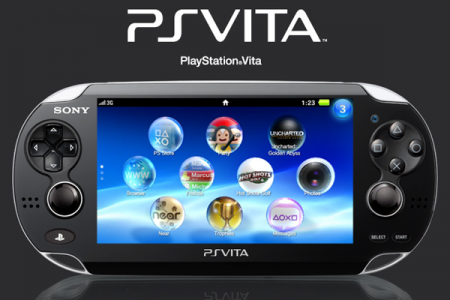(originally published @ tekhne.com)
Taking a $2.9 billion loss is like taking a punch from Mike Tyson. Ask Michael Spinks if he felt $2.9 billion lighter after his introduction to Tyson’s left hook.
Only Michael Spinks wasn’t expected to get back in the ring. Sony not only has to get back in the ring, they’re expected to return with all their faculties in check and retake the Heavyweight crown after four consecutive years of brutal industry pummeling rather than just 88 seconds.
Incoming CEO Kazuo Hirai isn’t pulling any punches, however. “I have a very strong sense of crisis about the environment surrounding us,” Hirai said at a news conference. “We cannot be afraid to make painful choices for the future of Sony. Our rivals and the operating environment won’t wait for us.”
Indeed, consumer electronics is a cutthroat industry, one that Sony once dominated through portable music devices, televisions and home audio. But its market share in each has dwindled and in some instances disappeared. Just ask the Sony Walkman how it’s faring lately. The omnipresent cassette recorders of our collective youths gave way to bargain-bin digital audio devices dominated by Apple’s iPod. Though well-reviewed, the product never gained a foothold and went the way of the Microsoft Zune. If nothing else even the Zune fared better as a pop-culture punchline. Now Sony must regroup, re-evaluate and innovate. Though inconceivable, insiders even suggest that a departure from the television business altogether might be in order.
Sony clung too stubbornly to their flagship cathode-ray tube televisions and fell behind emerging technology. A bum deal with Samsung to make LCD flat panels nearly sunk the entire enterprise before Sony bought its way out of the deal late last year. The TV market left them behind. Apple stomped all over their portable audio and home computer market like Godzilla over Tokyo. Their attempts to invade the tablet market with their S-Tablet and Xperia Play smartphone are belated at best. Where, then, can Sony turn to find a reliable source of profit if not these old standbys?
Video games.
No, really. Therein lies Sony’s (at least temporary) salvation.
For the first time in the Playstation 3 console generation, which began in 2006, Sony turned a profit in their video game division. Courtesy of a lower price point and redesign that made the console cheaper to produce, the Playstation emerged as a steady profiteer for the company in 2011. Additionally, outside industry technology caught up to the unit’s powerful innards. It was no secret that Sony launched an ambitious console in 2006, certainly more technologically advanced than its competitors. Nintendo’s Wii merely repackaged old technology with basic motion control. Microsoft beat its competitors to store shelves but did so at the expense of advancement – coming packaged with only a DVD drive, the potential for an add-on HD-DVD player (a strategy abandoned nearly before launch), a miniscule hard-drive and without built-in WiFi.
A perfect HD-DVD vs. Blu-Ray bit appears in the movie Tropic Thunder, which summarizes how Sony’s Blu-ray commitment saved the PS3 console generation. Gamers and porn.
Anyway, at the PS3’s launch well fewer than 50 percent of American homes contained an HD television. Now that number exceeds 70 percent. In addition to HD, sets are capable of 3D-displays. The Playstation can do that as well. The Playstation may not have been the first choice for gaming – the 360 provided a more user friendly XMB (XrossMediaBar), a better online gaming arena with XBox Live and a larger selection of games – but the Playstation became the better choice for an all-in-one media center, therefore becoming a second console for hardcore gamers and more often, a first console for casual- and even non-gamers.
On February 15th, Sony releases its brand new portable gaming console – the PS Vita. More rides on the release of this console beyond Sony’s gaming profitability; an entire industry is watching how another standalone gaming gadget fares in a marketplace that has in recent years been cruel to the gaming giants. Most recently the Nintendo 3DS, a capable, well-reviewed system, hit that wall. Big-N reacted by dropping the price of the unit by $100 to spur sales. Before the 3DS, Sony released the PSP, another unit with impressive hardware that lost the sales war to the Nintendo DS and its many iterations. The difference between now and the 2004 launch of the DS? Smartphones. Tablets. $0.99 cent apps. Cheap or free gaming right there on your phone.
Name a game bigger than Angry Birds. Kids at my daughter’s pre-school wear Angry Birds t-shirts. Their moms discussed the availability of Angry Birds plush toys and other paraphernalia around Christmas time. Go to any family-friendly restaurant. What are all the kids doing while their families wait for a table with their noses buried in mom or dad’s cell phone? They’re not reorganizing an address book. Other than Mario I can’t recall a gaming brand with such widespread market recognition. Even World of Warcraft which boasts more than 10.3 million subscribers (as of September 2011) and appearances in all-star episodes of the Big Bang Theory and South Park never dreamed of this kind of brand recognition.
Tablet and phone apps appear to have a stranglehold on the market. But how much is perception versus reality? According to a recent ZDNet survey, 71 percent of adults and 79 percent of teens play a tablet/phone game for more than an hour per month. A more shocking statistic is that Facebook gamers spend, on average, $21 per month on virtual goods and upgrades for “FREE” gaming. Free. Virtual dollars come in, virtual dollars come out.
As a result, developers have begun investing heavily in cheap or free mobile gaming, the development of which is only a fraction of the cost of devoted console games. If these gamers can play anywhere, they’ll pay anywhere. Thus we come to the divide: those that play idly and those that intend to play. The number of dedicated console gamers has actually risen – though studies offer varying numbers, the average age of a “gamer” is now somewhere around 40. The market proves to be ever-expanding. But the potential market for casual mobile games is increasing at a much greater rate. If this sounds more like a zombie infestation than the video game market, with idle, tap-in/tap-out gaming being the disease, you might not be too far off. Would anyone have thought that so-called hardcore gamers could appear more purposeful and mindful of their time than another segment of the population?
Advance specs for the Vita suggest that if nothing else Sony is again running headlong into the fray, guns blazing, hoping for an ending more like The Magnificent Seven (where at least some of them make it out alive) than Butch Cassidy and the Sundance Kid.
The Vita is an advanced handheld system boasting new frills (a rear touch-screen, on-the-go XMB and trophy integration with the PS3) and an old philosophy (eventually the better tech wins out). A successful launch can make or break a console, but a decisive verdict likely won’t arise for a year, maybe two.
The Japanese launch of the Vita disappointed, but Sony never tailored the launch lineup for Eastern palettes. It lacks the major Japanese console-moving franchises. With arguable the PS3’s biggest franchise, Uncharted, leading the first wave, this one’s aimed squarely at Western sensibilities. And who knows… with a little early Vita success and continued profits from the Playstation 3, maybe even Sony will get back into that ring, humming that old Fresh Prince classic: “I Think I Can Beat Mike Tyson.”
Vita has been billed a game-changer for portable gaming devices, but unlike the old days when a little advance buzz could make a system launch, the market for the Vita may prove to be a little more elusive. As shown by the statistics, there’s a huge percentage of the population that want little more from their games than flinging fowl foul with rubber bands.


